Jianwen Li
On-the-fly Synthesis for LTL over Finite Traces: An Efficient Approach that Counts
Aug 14, 2024



Abstract:We present an on-the-fly synthesis framework for Linear Temporal Logic over finite traces (LTLf) based on top-down deterministic automata construction. Existing approaches rely on constructing a complete Deterministic Finite Automaton (DFA) corresponding to the LTLf specification, a process with doubly exponential complexity relative to the formula size in the worst case. In this case, the synthesis procedure cannot be conducted until the entire DFA is constructed. This inefficiency is the main bottleneck of existing approaches. To address this challenge, we first present a method for converting LTLf into Transition-based DFA (TDFA) by directly leveraging LTLf semantics, incorporating intermediate results as direct components of the final automaton to enable parallelized synthesis and automata construction. We then explore the relationship between LTLf synthesis and TDFA games and subsequently develop an algorithm for performing LTLf synthesis using on-the-fly TDFA game solving. This algorithm traverses the state space in a global forward manner combined with a local backward method, along with the detection of strongly connected components. Moreover, we introduce two optimization techniques -- model-guided synthesis and state entailment -- to enhance the practical efficiency of our approach. Experimental results demonstrate that our on-the-fly approach achieves the best performance on the tested benchmarks and effectively complements existing tools and approaches.
C3D: Cascade Control with Change Point Detection and Deep Koopman Learning for Autonomous Surface Vehicles
Mar 14, 2024Abstract:In this paper, we discuss the development and deployment of a robust autonomous system capable of performing various tasks in the maritime domain under unknown dynamic conditions. We investigate a data-driven approach based on modular design for ease of transfer of autonomy across different maritime surface vessel platforms. The data-driven approach alleviates issues related to a priori identification of system models that may become deficient under evolving system behaviors or shifting, unanticipated, environmental influences. Our proposed learning-based platform comprises a deep Koopman system model and a change point detector that provides guidance on domain shifts prompting relearning under severe exogenous and endogenous perturbations. Motion control of the autonomous system is achieved via an optimal controller design. The Koopman linearized model naturally lends itself to a linear-quadratic regulator (LQR) control design. We propose the C3D control architecture Cascade Control with Change Point Detection and Deep Koopman Learning. The framework is verified in station keeping task on an ASV in both simulation and real experiments. The approach achieved at least 13.9 percent improvement in mean distance error in all test cases compared to the methods that do not consider system changes.
Vision-driven Autonomous Flight of UAV Along River Using Deep Reinforcement Learning with Dynamic Expert Guidance
Jan 17, 2024Abstract:Vision-driven autonomous flight and obstacle avoidance of Unmanned Aerial Vehicles (UAVs) along complex riverine environments for tasks like rescue and surveillance requires a robust control policy, which is yet difficult to obtain due to the shortage of trainable river environment simulators and reward sparsity in such environments. To easily verify the navigation controller performance for the river following task before real-world deployment, we developed a trainable photo-realistic dynamics-free riverine simulation environment using Unity. Successful river following trajectories in the environment are manually collected and Behavior Clone (BC) is used to train an Imitation Learning (IL) agent to mimic expert behavior and generate expert guidance. Finally, a framework is proposed to train a Deep Reinforcement Learning (DRL) agent using BC expert guidance and improve the expert policy online by sampling good demonstrations produced by the DRL to increase convergence rate and policy performance. This framework is able to solve the along-river autonomous navigation task and outperform baseline RL and IL methods. The code and trainable environments are available.
An Efficient Detection and Control System for Underwater Docking using Machine Learning and Realistic Simulation: A Comprehensive Approach
Nov 06, 2023Abstract:Underwater docking is critical to enable the persistent operation of Autonomous Underwater Vehicles (AUVs). For this, the AUV must be capable of detecting and localizing the docking station, which is complex due to the highly dynamic undersea environment. Image-based solutions offer a high acquisition rate and versatile alternative to adapt to this environment; however, the underwater environment presents challenges such as low visibility, high turbidity, and distortion. In addition to this, field experiments to validate underwater docking capabilities can be costly and dangerous due to the specialized equipment and safety considerations required to conduct the experiments. This work compares different deep-learning architectures to perform underwater docking detection and classification. The architecture with the best performance is then compressed using knowledge distillation under the teacher-student paradigm to reduce the network's memory footprint, allowing real-time implementation. To reduce the simulation-to-reality gap, a Generative Adversarial Network (GAN) is used to do image-to-image translation, converting the Gazebo simulation image into a realistic underwater-looking image. The obtained image is then processed using an underwater image formation model to simulate image attenuation over distance under different water types. The proposed method is finally evaluated according to the AUV docking success rate and compared with classical vision methods. The simulation results show an improvement of 20% in the high turbidity scenarios regardless of the underwater currents. Furthermore, we show the performance of the proposed approach by showing experimental results on the off-the-shelf AUV Iver3.
ASV Station Keeping under Wind Disturbances using Neural Network Simulation Error Minimization Model Predictive Control
Oct 11, 2023Abstract:Station keeping is an essential maneuver for Autonomous Surface Vehicles (ASVs), mainly when used in confined spaces, to carry out surveys that require the ASV to keep its position or in collaboration with other vehicles where the relative position has an impact over the mission. However, this maneuver can become challenging for classic feedback controllers due to the need for an accurate model of the ASV dynamics and the environmental disturbances. This work proposes a Model Predictive Controller using Neural Network Simulation Error Minimization (NNSEM-MPC) to accurately predict the dynamics of the ASV under wind disturbances. The performance of the proposed scheme under wind disturbances is tested and compared against other controllers in simulation, using the Robotics Operating System (ROS) and the multipurpose simulation environment Gazebo. A set of six tests were conducted by combining two wind speeds (3 m/s and 6 m/s) and three wind directions (0$^\circ$, 90$^\circ$, and 180$^\circ$). The simulation results clearly show the advantage of the NNSEM-MPC over the following methods: backstepping controller, sliding mode controller, simplified dynamics MPC (SD-MPC), neural ordinary differential equation MPC (NODE-MPC), and knowledge-based NODE MPC (KNODE-MPC). The proposed NNSEM-MPC approach performs better than the rest in 4 out of the 6 test conditions, and it is the second best in the 2 remaining test cases, reducing the mean position and heading error by at least 31\% and 46\% respectively across all the test cases. In terms of execution speed, the proposed NNSEM-MPC is at least 36\% faster than the rest of the MPC controllers. The field experiments on two different ASV platforms showed that ASVs can effectively keep the station utilizing the proposed method, with a position error as low as $1.68$ m and a heading error as low as $6.14^{\circ}$ within time windows of at least $150$s.
Learning on Abstract Domains: A New Approach for Verifiable Guarantee in Reinforcement Learning
Jun 13, 2021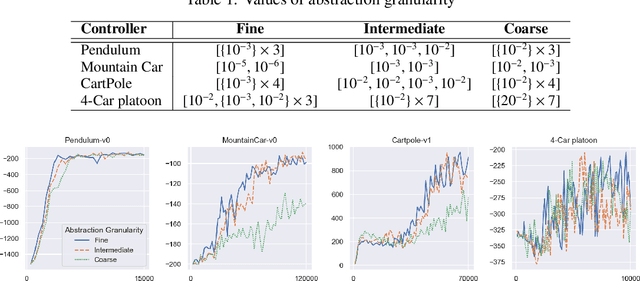

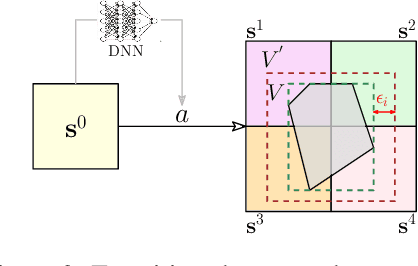
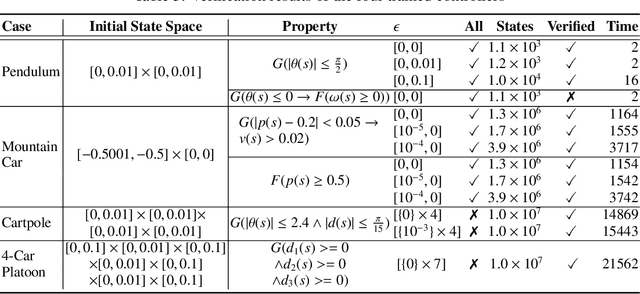
Abstract:Formally verifying Deep Reinforcement Learning (DRL) systems is a challenging task due to the dynamic continuity of system behaviors and the black-box feature of embedded neural networks. In this paper, we propose a novel abstraction-based approach to train DRL systems on finite abstract domains instead of concrete system states. It yields neural networks whose input states are finite, making hosting DRL systems directly verifiable using model checking techniques. Our approach is orthogonal to existing DRL algorithms and off-the-shelf model checkers. We implement a resulting prototype training and verification framework and conduct extensive experiments on the state-of-the-art benchmark. The results show that the systems trained in our approach can be verified more efficiently while they retain comparable performance against those that are trained without abstraction.
FakePolisher: Making DeepFakes More Detection-Evasive by Shallow Reconstruction
Jun 13, 2020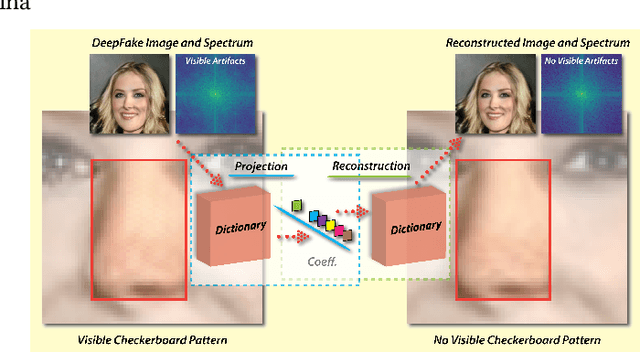



Abstract:The recently rapid advances of generative adversarial networks (GANs) in synthesizing realistic and natural DeepFake information (e.g., images, video) cause severe concerns and threats to our society. At this moment, GAN-based image generation methods are still imperfect, whose upsampling design has limitations in leaving some certain artifact patterns in the synthesized image. Such artifact patterns can be easily exploited (by recent methods) for difference detection of real and GAN-synthesized images. To reduce the artifacts in the synthesized images, deep reconstruction techniques are usually futile because the process itself can leave traces of artifacts. In this paper, we devise a simple yet powerful approach termed FakePolisher that performs shallow reconstruction of fake images through learned linear dictionary, intending to effectively and efficiently reduce the artifacts introduced during image synthesis. The comprehensive evaluation on 3 state-of-the-art DeepFake detection methods and fake images generated by 16 popular GAN-based fake image generation techniques, demonstrates the effectiveness of our technique.
FakeLocator: Robust Localization of GAN-Based Face Manipulations via Semantic Segmentation Networks with Bells and Whistles
Feb 21, 2020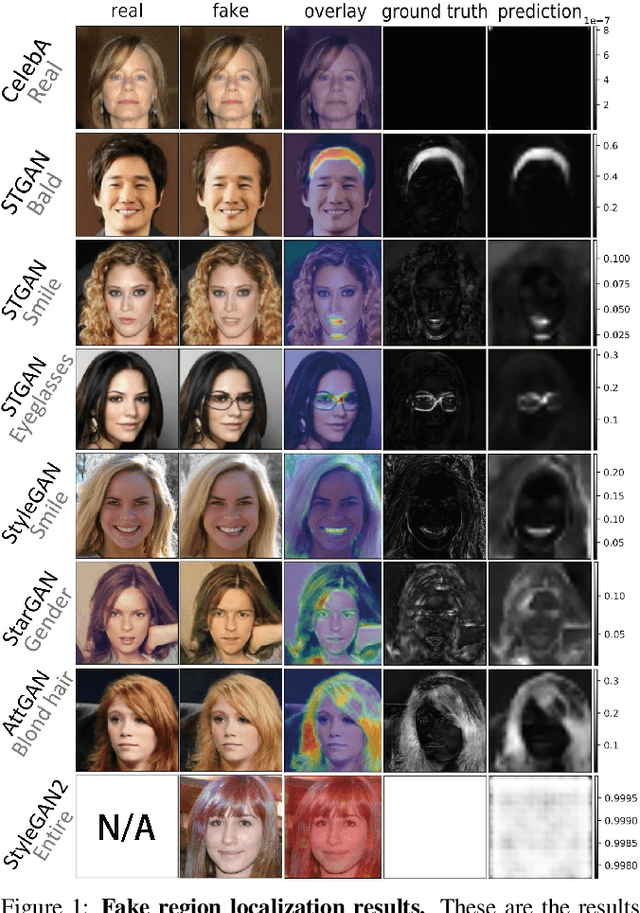
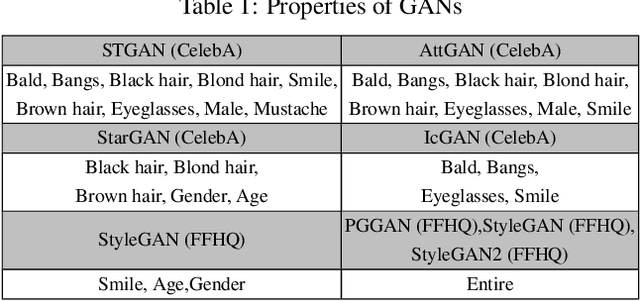

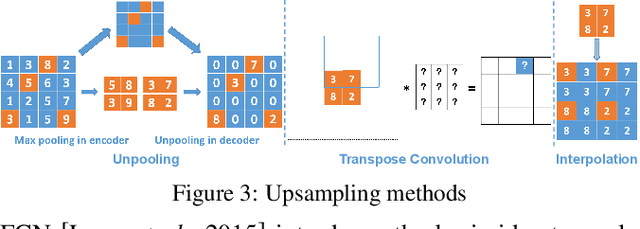
Abstract:Nowadays, full face synthesis and partial face manipulation by virtue of the generative adversarial networks (GANs) have raised wide public concern. In the digital media forensics area, detecting and ultimately locating the image forgery have become imperative. Although many methods focus on fake detection, only a few put emphasis on the localization of the fake regions. Through analyzing the imperfection in the upsampling procedures of the GAN-based methods and recasting the fake localization problem as a modified semantic segmentation one, our proposed FakeLocator can obtain high localization accuracy, at full resolution, on manipulated facial images. To the best of our knowledge, this is the very first attempt to solve the GAN-based fake localization problem with a semantic segmentation map. As an improvement, the real-numbered segmentation map proposed by us preserves more information of fake regions. For this new type segmentation map, we also find suitable loss functions for it. Experimental results on the CelebA and FFHQ databases with seven different SOTA GAN-based face generation methods show the effectiveness of our method. Compared with the baseline, our method performs several times better on various metrics. Moreover, the proposed method is robust against various real-world facial image degradations such as JPEG compression, low-resolution, noise, and blur.
Symbolic LTLf Synthesis
Sep 21, 2017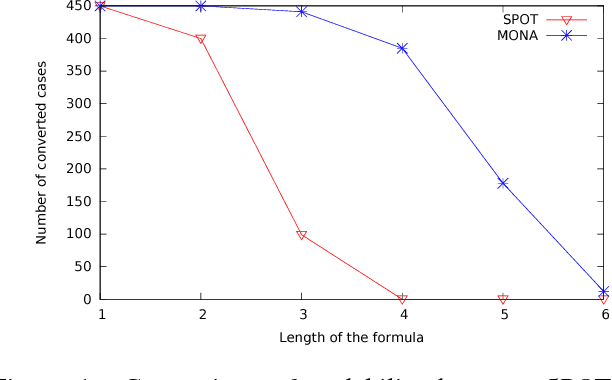
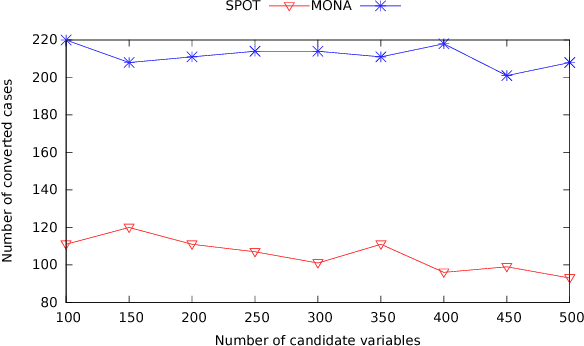
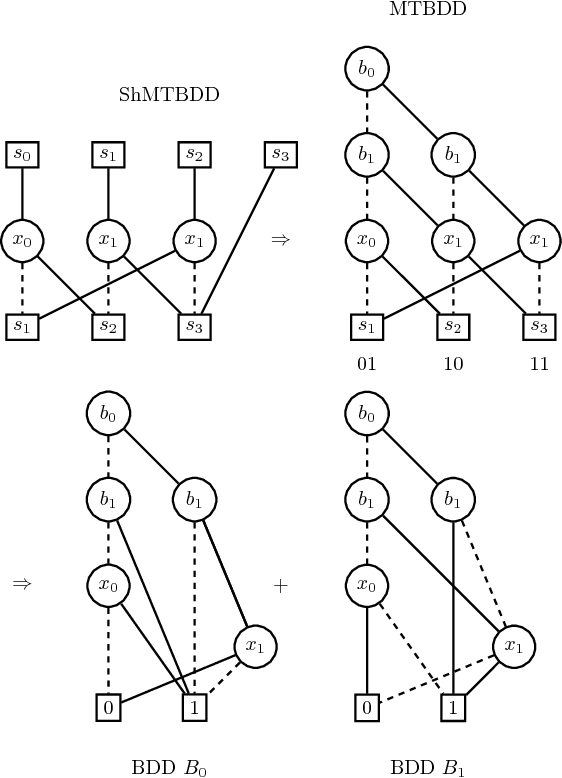
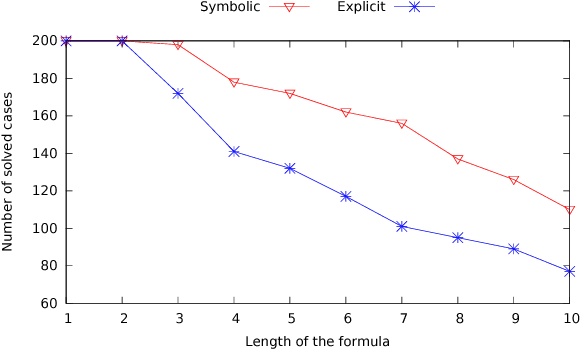
Abstract:LTLf synthesis is the process of finding a strategy that satisfies a linear temporal specification over finite traces. An existing solution to this problem relies on a reduction to a DFA game. In this paper, we propose a symbolic framework for LTLf synthesis based on this technique, by performing the computation over a representation of the DFA as a boolean formula rather than as an explicit graph. This approach enables strategy generation by utilizing the mechanism of boolean synthesis. We implement this symbolic synthesis method in a tool called Syft, and demonstrate by experiments on scalable benchmarks that the symbolic approach scales better than the explicit one.
 Add to Chrome
Add to Chrome Add to Firefox
Add to Firefox Add to Edge
Add to Edge